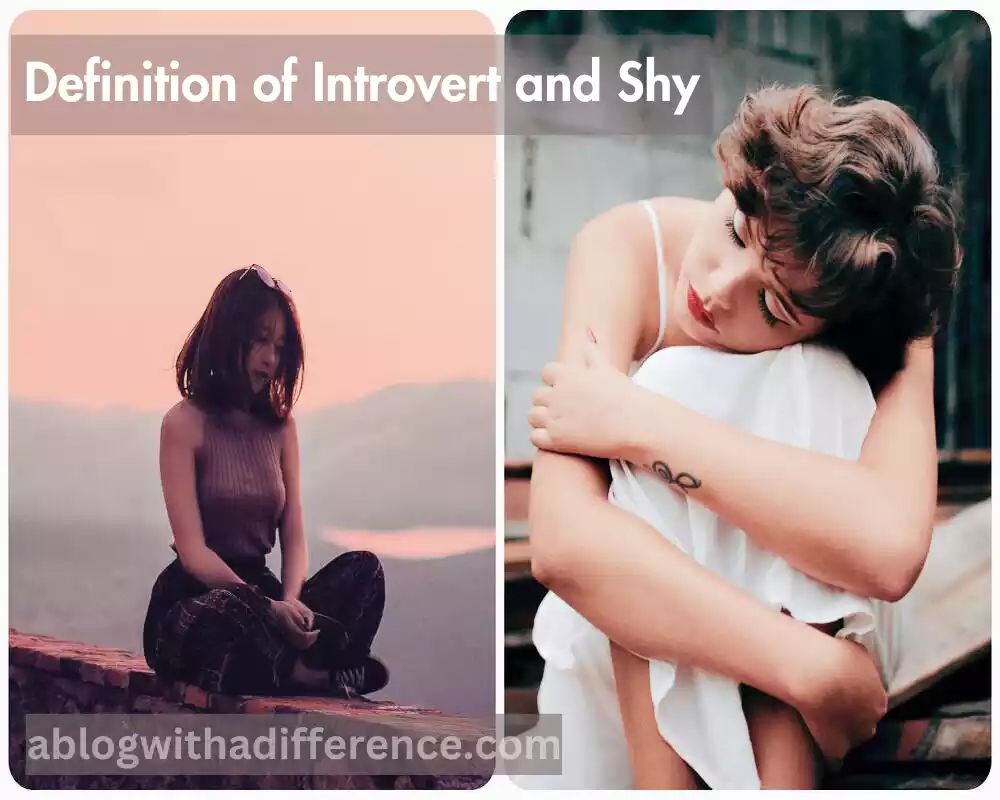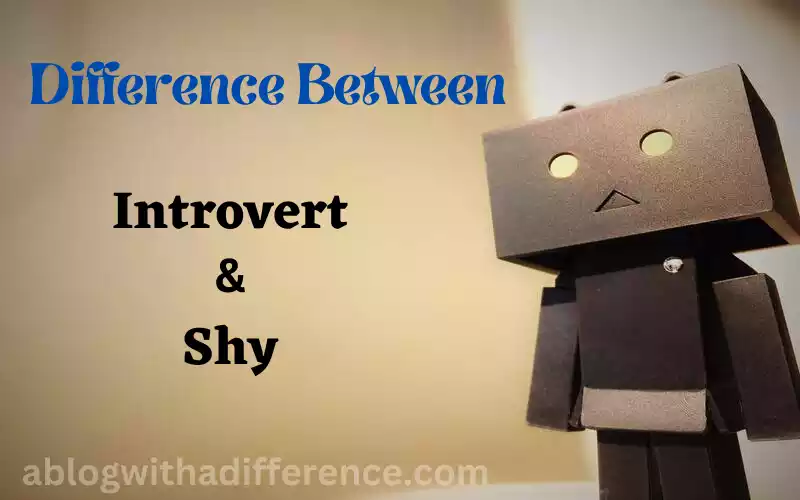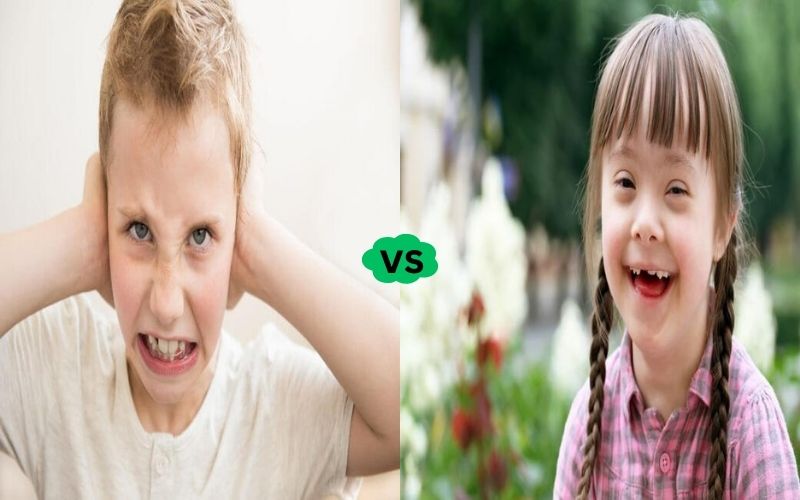Introvert and Shy 5 great difference you should know
Introvert and Shy individuals often find themselves misunderstood. It is crucial to recognize that being introverted or shy is not a flaw but rather a unique characteristic. This article aims to shed light on the traits of introversion and shyness, their differences, the strengths they possess, and strategies for embracing and thriving in a world that sometimes overlooks their value.
Definition of Introvert and Shy
Introvert: Introvert refers to an individual with personality characteristics characterized by preferring solitude and self-focus over social engagements. Introverts often feel energized by spending time alone, engaging in introspection, and engaging in activities that allow for solitary reflection. They may enjoy quieter and more intimate social interactions and may find larger social gatherings draining or overwhelming.
Introverts tend to be thoughtful, observant, and deep thinkers, valuing meaningful connections and deep conversations.
Though introversion can often be associated with silence and reserve, it’s essential to recognize that introverts may possess social confidence as well as competence – though they might prefer more intimate social settings. Being introverted is an understandable personality trait; being introverted doesn’t equate to a lack of social confidence or shyness!

Shy: Shyness refers to feelings of discomfort in social settings. Signs of shyness include anxiety, nervousness, and self-consciousness when engaging with others – particularly in public settings or situations that are unfamiliar. Shy people may have difficulty initiating conversations and participating in discussions or may shy away from attention and the spotlight altogether.
Their fear of being judged negatively by other people could cause further shyness or withdrawal from social interactions altogether. Being shy is a reaction to social situations that vary depending on who’s experiencing them, not an inherent trait that defines all. Separating shyness from introversion is crucial, as introverts tend to enjoy solitude and quiet environments while shy individuals may experience anxiety when social situations arise.
Feelings of shyness may be temporary or persist over time; those affected need assistance and understanding from others while developing strategies to feel more at ease and confident when socializing.
Importance of understanding the difference between Introvert and Shy
Deciphering the distinctions between shyness and introversion are vitally important, for numerous reasons:
1. Avoiding Misunderstandings: People often misuse the terms “introvert” and “shy,” leading them into confusion and leading to false assumptions and interpretations of them. Recognizing the distinction helps prevent mislabeling individuals and stereotyping them based on incorrect assumptions.
2. Personal Growth and Self-Awareness: Understanding whether one is an introvert or shy can enhance self-awareness and personal growth. An assessment can assist people in understanding their characteristics such as preferences and strengths so they can make educated decisions regarding social interactions, personal relationships, and self-care.
3. Nurturing Relationships: Knowing the difference between introversion and shyness can improve the quality of relationships. Recognizing that introverts may need solitude and quiet time to recharge helps others understand and respect their boundaries. Similarly, understanding that shyness stems from anxiety rather than a lack of interest can help in supporting and encouraging shy individuals in social situations.
4. Promoting Inclusion: By understanding the differences between introversion and shyness, individuals can create more inclusive and supportive environments. Recognizing that not all introverts are shy and not all shy individuals are introverts helps foster an environment that values and respects different personality traits and temperaments.
5. Professional Settings: In the workplace, understanding the difference between introversion and shyness can lead to more effective teamwork and collaboration. Employers and colleagues can create a work environment that accommodates the needs of introverts and provides support and encouragement to shy individuals, allowing them to contribute their unique perspectives and talents.
6. Empathy and Compassion: Developing an understanding of introversion and shyness promotes empathy and compassion towards others. It allows individuals to recognize that different people have diverse needs and comfort levels in social situations. By appreciating and respecting these differences, individuals can foster positive and inclusive interactions with others.
Understanding the difference between introversion and shyness is crucial for personal growth, nurturing relationships, creating inclusive environments, and fostering empathy and compassion. It enables individuals to embrace and appreciate the diversity of personalities and promotes a more understanding and supportive society.
Characteristics of Introverts
Introverts exhibit characteristic behaviors that distinguish them from extroverts. While it’s important to realize that individuals exhibit various degrees of introverted tendencies.

Here are some traits commonly seen among introverts:
1. Preference for Solitude: Introverts often seek out and value alone time. They recharge their energy by being in quiet environments and engaging in solitary activities, such as reading, reflecting, or pursuing hobbies.
2. Reserved Nature: Introverts tend to be more reserved and quiet in social settings. They may be more inclined to observe and listen rather than actively participate in conversations. They typically think before speaking and choose their words carefully.
3. Internal Focus: Introverts have a strong focus on their internal thoughts, feelings, and experiences. They often spend time introspecting and analyzing their own emotions and ideas. This internal focus contributes to their self-awareness and introspective nature.
4. Deep Connections: While introverts may have a smaller social circle, they tend to form deep and meaningful relationships. They value quality over quantity when it comes to friendships and prioritize having a few close connections with whom they can share their inner thoughts and feelings.
5. Preference for Meaningful Conversations: Introverts often enjoy engaging in deep, meaningful conversations rather than small talk. They appreciate discussions that explore ideas, emotions, and philosophical topics. They may feel more energized and engaged when the conversation aligns with their interests and passions.
6. Need for Recharge Time: Social interactions, especially in large groups or for extended periods, can be draining for introverts. They require time alone to recharge and regain their energy. This downtime allows them to process their experiences and restore their mental and emotional well-being.
7. Focus on Fewer Activities: Introverts typically prefer focusing on a limited number of activities rather than spreading themselves too thin across various commitments. They thrive when they can immerse themselves deeply in a specific area of interest or expertise.
8. Thoughtful Decision-making: Introverts often take their time when making decisions. They carefully consider different options, weighing the pros and cons before concluding. Their thoughtful approach stems from their preference for internal reflection and desire for a well-thought-out course of action.
These traits tend to be present among introverted individuals but anyone can display some or all of them to various degrees. Introversion is a spectrum, and everyone’s introversion is unique.
Characteristics of Shy
Shyness can be defined as an array of behaviors and emotions associated with discomfort in social settings. While its manifestation may differ between individuals.

Here are some general characteristics associated with shyness:
1. Social Anxiety: Shy individuals often experience social anxiety or unease in social situations, especially when interacting with unfamiliar people or in group settings. They may feel self-conscious, and worried about being judged or evaluated by others.
2. Difficulty Initiating Interactions: Shy individuals may find it challenging to initiate conversations or interactions with others, particularly with people they don’t know well. They may feel unsure about how to approach others or fear being rejected or misunderstood.
3. Limited Participation: Shy individuals tend to participate less actively in social settings. They may be hesitant to speak up, express their opinions, or share their ideas, fearing negative reactions or criticism.
4. Physical Symptoms of Anxiety: Shyness can manifest in physical symptoms of anxiety, such as blushing, sweating, trembling, or a racing heart. These physiological responses may be triggered by social interactions or situations that make shy individuals feel uncomfortable or self-conscious.
5. Desire for Social Connection: Despite their anxiety and hesitation, shy individuals typically desire social connections and meaningful relationships. They may long for companionship and interaction but struggle with overcoming the barriers created by their shyness.
6. Avoidance of Attention: Shy individuals often prefer to avoid being the center of attention. They may feel uncomfortable with public speaking or situations that require them to be the focus of others’ attention. Instead, they prefer blending into the background and observing rather than being in the spotlight.
7. Slow Warm-up Time: Shy individuals may take longer to feel comfortable and open up in social situations. They may need time to observe and assess the environment or individuals before gradually engaging in conversation or participation.
8. Fear of Judgment: Shy individuals may have an intense fear of being negatively judged or evaluated by others. They may worry about saying or doing something embarrassing or being perceived as inadequate or awkward.
Keep in mind that shyness isn’t a permanent part of our personalities; its intensity and expression may vary between individuals. Shyness may manifest itself only during specific situations or may impact multiple aspects of a person’s life in general. Support, understanding, and gradual exposure to social situations can help shy individuals build confidence and manage their social anxiety.
Differences Between Introverts and Shy
Shyness and introversion may often be confused, yet these two distinct concepts possess distinct traits with some key distinctions between them.
Here are the main differences between introverts and shy individuals:
1. Innate Personality Trait vs. Social Anxiety:
- Introversion: Introversion is a personality trait characterized by a preference for internal focus, solitude, and quiet environments. It is not inherently linked to social anxiety or fear.
- Shyness: Shyness, on the other hand, is rooted in social anxiety or discomfort. It is a response to social situations and is often characterized by fear, hesitation, or unease when interacting with others.
2. Preference vs. Fear:
- Introversion: Introverts prefer calm and solitary environments, where they can recharge their energy and engage in introspection. They may enjoy social interactions but typically require alone time to restore their energy.
- Shyness: Shy individuals desire social interaction and connection, but they experience fear, anxiety, or discomfort in social situations. Shyness often hinders their ability to engage fully due to their fear of negative judgment or evaluation.
3. Enjoying Solitude vs. Seeking Connection:
- Introversion: Introverts find solace and rejuvenation in solitude. They may actively seek out alone time and solitary activities to reflect, recharge, and pursue their interests.
- Shyness: Shy individuals may desire social connection but struggle with initiating or fully participating in social interactions due to their anxiety or self-consciousness. They may feel more comfortable in familiar or small-group settings.
4. Stable Trait vs. Overcoming Obstacle:
- Introversion: Introversion is considered a stable personality trait that remains relatively consistent throughout an individual’s life. Problematic behaviors don’t need to be overcome or modified; rather, these issues must simply be managed.
- Shyness: Shyness is usually perceived as temporary social discomfort that can be overcome through gradual exposure, practice, and building confidence in social settings.
5. Not Necessarily Linked to Social Awkwardness:
- Introversion: Introversion doesn’t equate with social awkwardness or incapacity for social interaction. Introverts can be socially adept, engaging, and have meaningful relationships, even if they prefer deeper conversations and smaller social circles.
- Shyness: Shy individuals may exhibit social awkwardness due to their anxiety or hesitancy in social situations. Social awkwardness doesn’t just manifest itself among shy individuals – it exists across all demographics regardless of introversion/extroversion preferences.
Keep in mind that shyness and introversion are two distinct concepts; both can exist simultaneously within someone. Understanding these differences can help in providing appropriate support, creating inclusive environments, and appreciating the diversity of personalities and temperaments.
Overlapping Traits and Common Misconceptions
While introversion and shyness have distinct characteristics, there are overlapping traits that can lead to some misconceptions.
Here are some common misconceptions and overlapping traits between introversion and shyness:
1. Social Withdrawal: Both introverts and shy individuals may exhibit tendencies of social withdrawal or reticence in certain situations. They may prefer quieter or smaller group settings, which can be mistaken as disinterest or aloofness by others.
2. Observational Skills: Introverts and shy individuals often possess strong observational skills. They may spend time observing and analyzing their surroundings or people’s behaviors before actively engaging. This can be misinterpreted as being reserved or distant.
3. Preference for Meaningful Connections: Both introverts and shy individuals typically value meaningful connections and deeper conversations over surface-level interactions. They may seek quality relationships rather than a large number of acquaintances.
4. Sensitivity to Stimulation: Introverts and shy individuals may be more sensitive to external stimulation, such as noise or crowds. They may feel overwhelmed or mentally exhausted in highly stimulating environments, leading to a desire for quieter settings.
5. Need for Recharge Time: Both introverts and shy individuals benefit from recharging their energy. Introverts may require solitude to restore their energy levels, while shy individuals may need time to recover from the anxiety or stress caused by social interactions.
6. Mislabeling as Shy: Introverts may be mistakenly labeled shy due to their reserved or quiet nature, even if they do not experience social anxiety. This mislabeling can overlook the fact that introverts may genuinely enjoy socializing but have a preference for more controlled or intimate social interactions.
7. Mislabeling as Introverted: Shy individuals may be incorrectly identified as introverts solely based on their social anxiety or hesitation in social situations. This assumption overlooks the possibility that their shyness is a separate trait that can be overcome with time and practice.
It’s important to remember that while these overlapping traits exist, introversion and shyness are distinct concepts. Recognizing and understanding these interlinked traits can help avoid misperceptions and give an improved picture of an individual’s preferences and needs.
Coping Strategies and Support
Coping strategies and support can be beneficial for both introverts and shy individuals.
Here are a few strategies and forms of support that may assist individuals in living independent social lives and improving their well-being:
1. Self-Acceptance and Understanding:
- Encourage self-acceptance and embrace one’s introverted or shy nature. Recognizing these behaviors are common can help people develop an optimistic self-image and decrease judgment of themselves.
2. Gradual Exposure and Practice:
- For shy individuals, gradually exposing themselves to social situations can help build confidence over time. Starting with small, comfortable settings and gradually increasing the level of exposure can make social interactions feel less overwhelming.
3. Building a Support System:
- Surrounding oneself with understanding and supportive individuals can create a safe and nurturing environment. Having a network of friends, family, or like-minded individuals who appreciate and respect one’s introverted or shy nature can provide a sense of belonging and acceptance.
4. Finding Balance:
- Both introverts and shy individuals benefit from finding a balance between social interaction and solitude. It’s important to honor one’s need for alone time while also seeking opportunities for meaningful social connections that align with their comfort levels.
5. Communication Strategies:
- Developing effective communication strategies can be helpful for both introverts and shy individuals. This may include expressing oneself in writing, using active listening skills, or finding ways to contribute to conversations that align with one’s strengths (e.g., through thoughtful reflections or asking open-ended questions).
6. Seeking Professional Help:
- In cases where shyness or social anxiety becomes debilitating and significantly impacts daily life, seeking professional help from a therapist or counselor can be valuable. They can provide guidance, techniques, and support tailored to individual needs.
7. Education and Awareness:
- Increasing awareness and educating others about introversion and shyness can help promote understanding, empathy, and respect. By dispelling misconceptions and fostering a more inclusive environment, individuals can feel more comfortable being themselves.
8. Self-Care Practices:
- Self-care practices that promote overall well-being are indispensable for introverted or shy individuals. This may include engaging in activities they enjoy, practicing mindfulness or relaxation techniques, maintaining healthy boundaries, and prioritizing self-care routines.
Every individual may require customized strategies and assistance tailored specifically to their own requirements and circumstances. Experimenting with different approaches and finding what works best for oneself is key.
Conclusion
Introversion and shyness are natural aspects of human personality. Embracing these traits and understanding their nuances can lead to personal growth and enhanced social interactions. By recognizing the strengths that come with introversion and employing coping strategies for shyness, individuals can flourish both personally and professionally.

